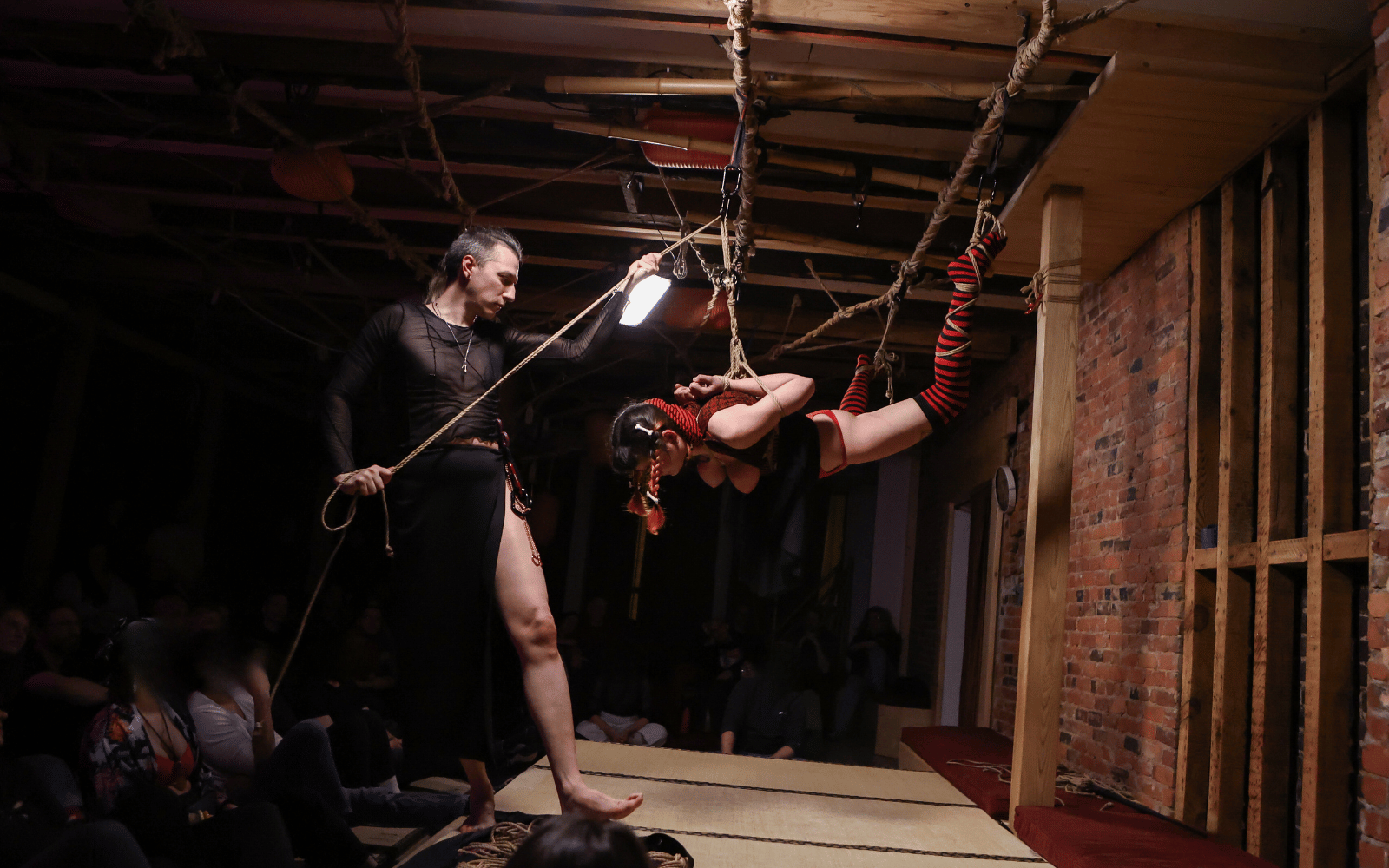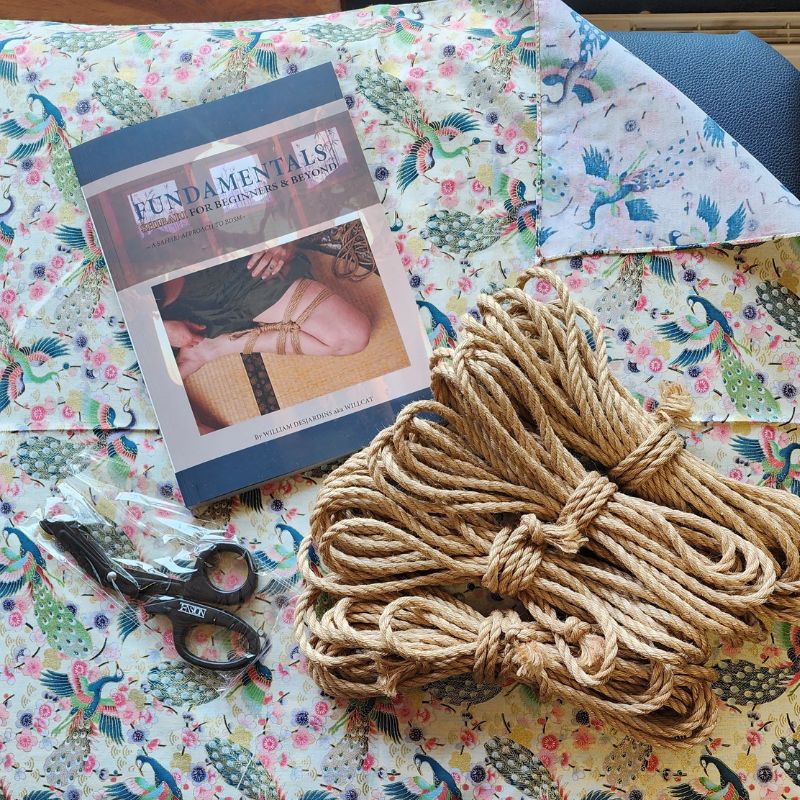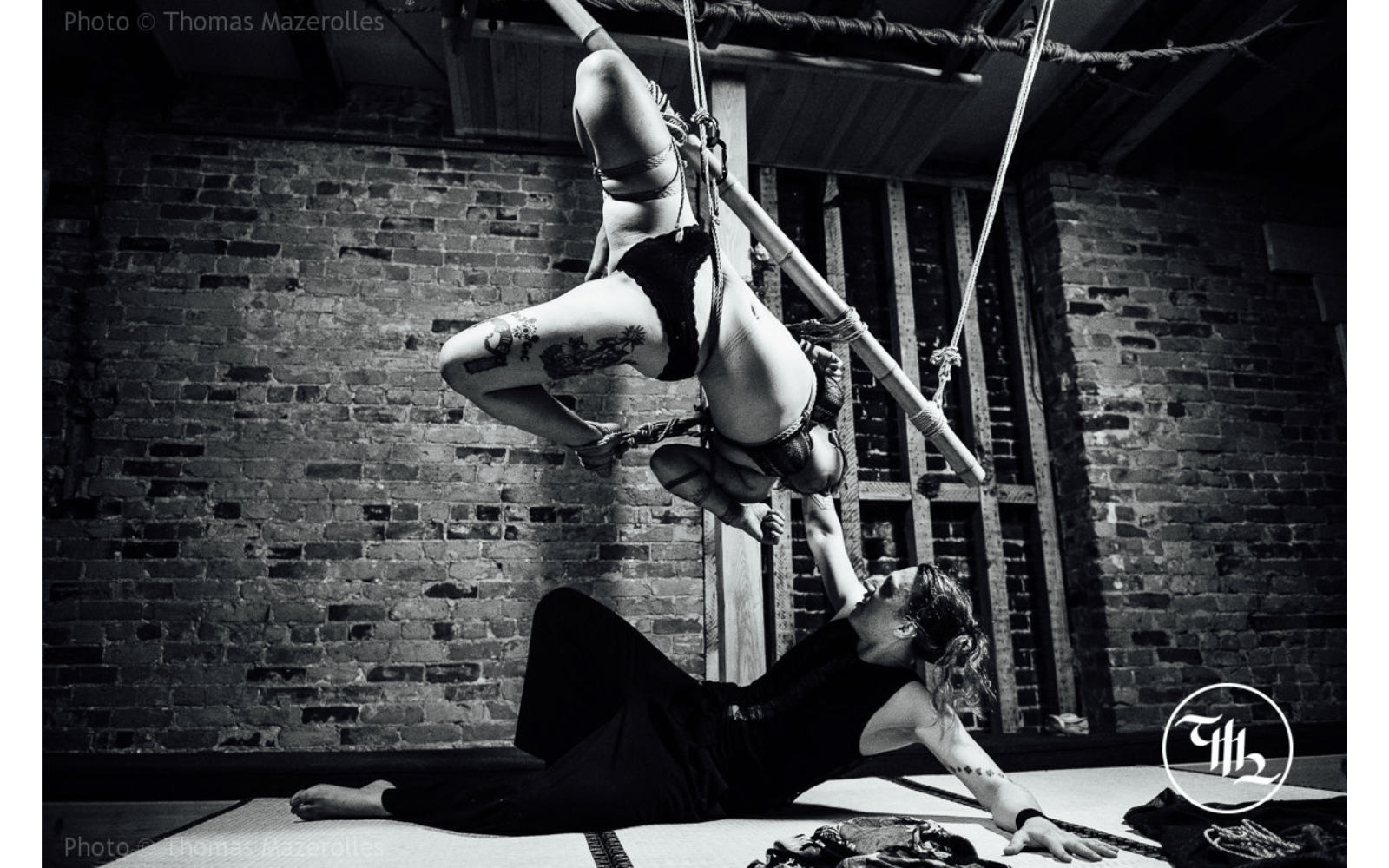
Willcat (Ielle/elle, they/them)
William Desjardins - Propriétaire d'entreprise / Éducateur·rice / Artiste / Auteur·rice
Leur style a parfois été décrit comme « un tourbillon de chaos structuré »

Passionnés et adaptables
William ou Willcat
Est un·e pratiquant·e expérimenté·e de shibari et un·e pédagogue reconnu·e pour son approche intense et risquée, mais toujours précise, du bondage par le mouvement, avec une touche artistique. Fort de plusieurs années d'expérience en rédaction technique et en enseignement, William explore à la fois les aspects techniques et émotionnels du shibari.
L’approche de William dépasse la simple technique : avec la publication de son livre, iel aspire à laisser un héritage dans le monde du shibari en aidant les autres à construire ou à trouver un espace qui respecte les traditions, encourage la croissance personnelle et soutienne les liens communautaires pour les générations futures.
Sa philosophie d’enseignement repose sur la création d’un environnement d’apprentissage structuré et ancré, permettant aux passionné·es de shibari du monde entier d’explorer avec confiance les multiples facettes de cet art. À travers des cours structurés et des conseils clairs, adaptés à différents niveaux de difficulté, iel offre aux élèves une base solide pour s’engager dans leur propre cheminement personnel. William inspire les autres à cultiver à la fois la maîtrise et la pleine conscience tout en trouvant leur Dō (leur propre chemin et parcours en corde), avec toujours une attention particulière au plaisir, à l’exploration et au respect mutuel.
Formal Disambiguation
Their style is informed by many styles and despite being heavily rooted in some is not recognized or officially "authorized" to teach in any particular japanese rope style;
Willcat’s approach to teaching shibari is fundamentally component-based, a technical training methodology inspired by martial arts and designed with a focus on safe(r) practices—especially for Western students. This approach balances traditional influences while meeting the needs of a broader audience in a way that prioritizes clarity and structured learning. An argument for the ages, as this goes against the grain of many traditional tendencies, all the while attempting to integrate them.
While running a full-time studio, Willcat continues to hone their mastery of basics, which are a blend of rope concepts and frictions shaped by the teachings of many, including Nawashi Kanna Sama, Pedro Cordas, Midori, EbiMcknotty, Sammy, Nicolas Yoroi, Tifereth, Fred RX, Barkas, Addy, Kindred, Marcos, Nuitdetokyo, Ottonawa San, Tamandua, Ben & the church of fucking around to find out, as well as inspiration from old DVDs, manuscripts, friends, “the internets,” and discoveries from hands-on self exploration.
⛩️
“I am without a dedicated Sensei, and maybe that is for the best as I can remain unattached to any particular approach and keep doing what I do best, opening doors for others and teaching basics”
⛩️
En vedette dans des films, podcasts & à la radio !
-

Un ete come ca
William a été le professionnel en corde dans une grande production cinématographique québécoise réalisée par Denis Côté — Un été comme ça (That Kind of Summer).
-

Au dela du sexe
Interview et expérience en direct dans "Au-delà du sexe"
Rose-Aimée a vécu une expérience d’attache par William et Masha de Tension lors de son émission Au-delà du sexe. -

SEXE ORAL
Interview et session d’attache avec les animateur·rice·s de Sexe Oral!
Envie de suivre un cours ou de planifier un service ?
**Horaire ci-dessous**

Iels ont écrit le livre
Si vous commencez à suivre des cours chez Tension, il est fortement recommandé de commencer par le début, car le premier cours est rempli d’informations essentielles, tant pour les débutant·es que pour les personnes ayant déjà une certaine expérience.
Ce n’est pas simplement un cours d’introduction (101), mais un véritable programme de formation technique qui vous prépare aux méthodologies d’enseignement et aux détails rarement abordés ou même mentionnés dans de nombreux cours.
Si vous préférez prendre votre temps, le livre est disponible en plusieurs formats et contient une grande quantité d’informations supplémentaires qui ne sont pas couvertes pendant le cours.




